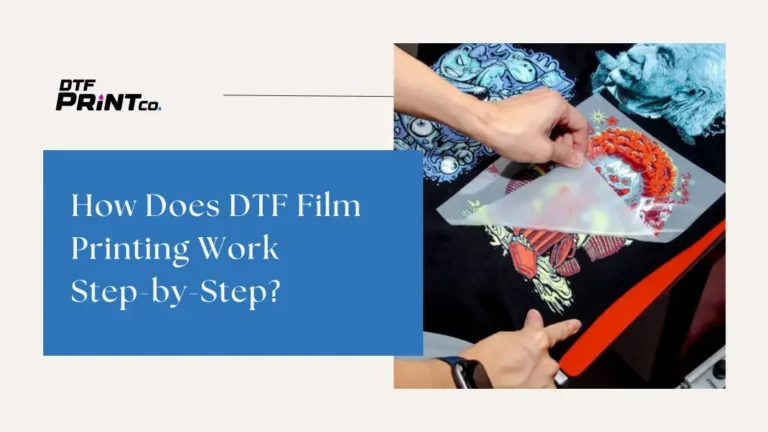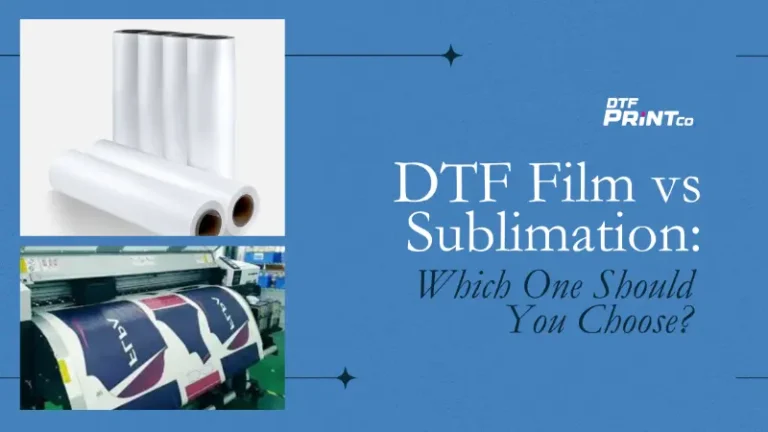
The Difference Between Hot Peel and Cold Peel DTF Film
Direct To Film (DTF) printing is rapidly becoming a popular choice for custom apparel and garment decoration. Unlike traditional screen printing or direct-to-garment (DTG) methods,

Welcome to the ultimate guide on selecting the right substrates for Direct-to-Film (DTF) printing! Whether you’re a seasoned pro or just dipping your toes into the world of custom printing, this guide will equip you with the knowledge to make informed decisions and achieve stunning results. Let’s dive in!
DTF printing has quickly become a game-changer in the custom printing industry. Its versatility allows for vibrant, high-quality prints on a wide range of materials, making it a go-to choice for both professionals and hobbyists. But with great power comes great responsibility—choosing the right substrate is crucial for optimal results.
One of the standout features of DTF printing is its adaptability. It works seamlessly on various fabrics, from natural fibers like cotton to synthetic materials like polyester. This makes it an excellent choice for different garment types and applications. Let’s break down some key points to consider when choosing your substrates.
Cotton-polyester blends are a popular choice because they strike a balance between comfort and print quality. These blends offer the softness of cotton with the durability and quick-drying properties of polyester, making them ideal for a wide range of garments.
Depending on the fabric type, you might need to pre-treat the material to ensure the DTF transfer adheres properly. This step is especially important for fabrics with low adhesion potential, ensuring your prints look vibrant and last longer.
Let’s explore some of the most popular substrates for DTF printing and their unique benefits:
Always check the fabric content to understand how the DTF transfer will adhere. Different fibers have unique characteristics that can affect the final print quality.
DTF printing works well on both light and dark fabrics, but the color can influence the vibrancy of your print. Testing a small area before full application can save you from surprises.
Consider the application and desired durability of the print. For example, activewear will need a durable, moisture-wicking fabric like polyester, while casual wear can benefit from the comfort of cotton.
Some fabrics may need pre-treatment to optimize print quality. Always follow the recommended guidelines for the best results.
DTF printing isn’t just for fabrics. Let’s explore some unconventional substrates:
Ensure your chosen substrate is compatible with DTF printing. Porous surfaces generally work best, allowing the ink to penetrate and adhere to the material.
Clean your substrate thoroughly before printing. Use a lint roller for fabrics and a mild cleaner for non-fabric substrates. Pre-treatment can also help optimize image adhesion.
Conduct a test print before proceeding with your main project. This step can save time, material, and energy in the long run.
DTF printing caters to an array of fabric types, opening doors for creative and unconventional fashion designs. The photo-quality images and durable prints make it ideal for showcasing intricate artwork on clothing and other wearable items.
Custom T-shirts, tote bags, and other promotional items are staples for events and marketing efforts. DTF printing enables businesses to create eye-catching, personalized merchandise to spread their message and enhance brand recognition.
From custom-printed cushion covers to personalized artwork on wooden panels, DTF printing presents innovative opportunities to add a unique touch to home décor items.
DTF printing offers unmatched versatility for custom printing. By understanding compatible substrates and following best practices, you can achieve exceptional results.
For success, use top-quality materials, maintain up-to-date equipment, and continuously improve. Staying attuned to the evolving landscape of custom printing will keep your business ahead.
For reliable DTF printing services, turn to Southeast Prints! Our experts ensure high-quality, durable prints. With cutting-edge technology, we handle all your DTF printing needs. Contact us today to elevate your projects.
The best materials for DTF printing include cotton, polyester, and cotton-polyester blends due to their excellent adhesion properties and versatility. Canvas and denim are also great options for durability and unique applications.
For DTF printing, you’ll need a DTF printer, transfer films, pre-treatment solution, and a heat press. Additional supplies like lint rollers and mild cleaners can help prepare substrates for optimal results.
High-resolution vector files, such as SVG or PDF, are best for DTF printing as they ensure sharp, scalable images. Alternatively, raster files like PNG with transparent backgrounds can also work well for detailed designs.
To achieve more vibrant DTF prints, ensure proper pre-treatment of the substrate and use high-quality inks. Additionally, adjust your printer settings to optimize color saturation and contrast.
Yes, DTF printing works well on 100% polyester, making it ideal for activewear and performance fabrics. Just ensure you follow the recommended settings to avoid scorching or burning the material.
Yes, a Teflon sheet is often used in DTF printing to protect the heat press and prevent ink from sticking to it during the transfer process, ensuring clean and precise prints.

Direct To Film (DTF) printing is rapidly becoming a popular choice for custom apparel and garment decoration. Unlike traditional screen printing or direct-to-garment (DTG) methods,

If you’ve ever dreamed of creating your own custom shirts, hoodies, or tote bags without spending a fortune or dealing with messy screens, there’s some

If you’re looking to start or grow a custom apparel business, you’ve probably heard about DTF film and sublimation printing. These are two of the

2023 - 2024 © ALL RIGHTS RESERVED